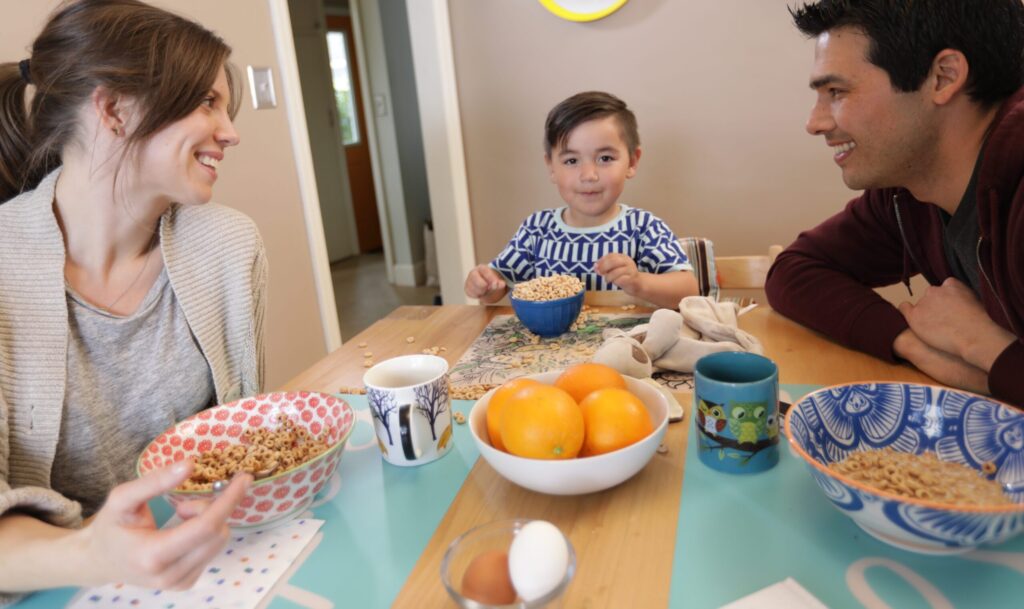
Bowlby, J. (1969). Attachment and loss: Volume 1. New York, NY: Basic Books. Center on the Developing Child at Harvard University. (n.d.). Key concepts: Brain architecture. Retrieved from http://developingchild.harvard.edu/science/key-concepts/brain-architecture/ Kaplan, L.J. (1978). Oneness and separateness: From infant to individual. New York, NY: Simon & Schuster. Kopp, C. B. (1982, March). Antecedents of self-regulation: A developmental […]

• Designe un lugar especial en su casa, como el cuarto de su hijo, en el que puedan centrar su atención el uno hacia el otro por unos minutos antes de decir adiós.
• Avísele a su hijo lo que va a pasar. Siéntese para estar al nivel de los ojos de su hijo, mírele en los ojos y dígale tranquilamente, “Mami se va en cinco minutos”. (Muéstrele los cinco dedos para reforzar el concepto.)

Como Linus, el mejor amigo de Charlie Brown, con su manta de seguridad, a menudo los niños se consuelan con tocar un objeto suave y familiar como un Animalito Especial o juguete de peluche.

Tal vez usted tiene la tentación de escaparse a escondidas y evitar un escándalo, pero eso suele hacer que su hijo
sea más ansioso. Puede facilitar las separaciones que
son dolorosas para los dos estableciendo una manera constante de decir adiós, parecido a lo que probablemente haya hecho para aliviar el estrés a la hora de dormir.

Al principio, usted es el centro del universo de su hijo. Su bebé recién nacido depende completamente de usted e imagina que usted es una extensión de él. Más o menos a los cuatro meses, su hijo empieza a darse cuenta de que usted está separado de él.

Probablemente usted ha tenido ocasiones cuando su hijo no quiere soltarle, quiere agarrarle y llora cuando es el momento de decir adiós. Los bebés y a veces los bebés mayores no hacen que sea fácil que usted se vaya – aun solo para irse rápidamente a la tienda.

A Routine for Separations “Goodbyes are not forever. Goodbyes are not the end. They simply mean I’ll miss you until we meet again.” – UNKNOWN

Bowlby, J. (1969). Attachment and loss: Volume 1. New York, NY: Basic Books. Center on the Developing Child at Harvard University. (n.d.). Key concepts: Brain architecture. Retrieved from http://developingchild.harvard.edu/science/key- concepts/brain-architecture/ Feldman, R. (2012, June 14). Bio-behavioral synchrony: A model for integrating biological and microsocial behavioral processes in the study of parenting. Parenting: Science and practice, […]

• Personalice el ritual y la rutina para encontrar un equilibrio entre el temperamento de usted y el de su hijo.
• Mantenga flexibilidad y modifique las rutinas y los rituales conforme con los estilos de aprendizaje y las necesidades cambiantes de desarrollo de su hijo.

Amanda tiene tres años y su mamá estaba encantada
al principio cuando Amanda comenzó a vestirse sola, pero de repente las mañanas se convirtieron en una batalla, Amanda se sentía apurada y su mamá se sentía molesta por el tiempo que Amanda se tomaba en elegir que ponerse.



